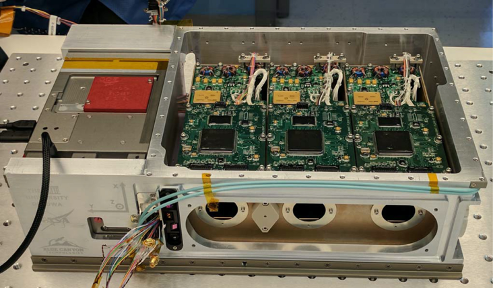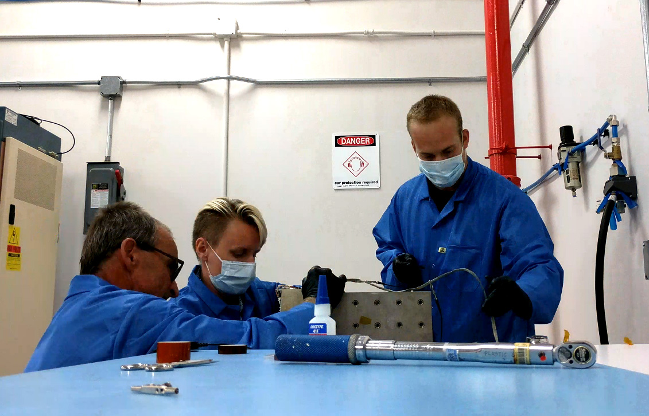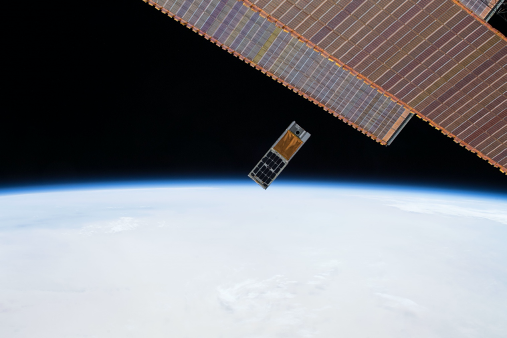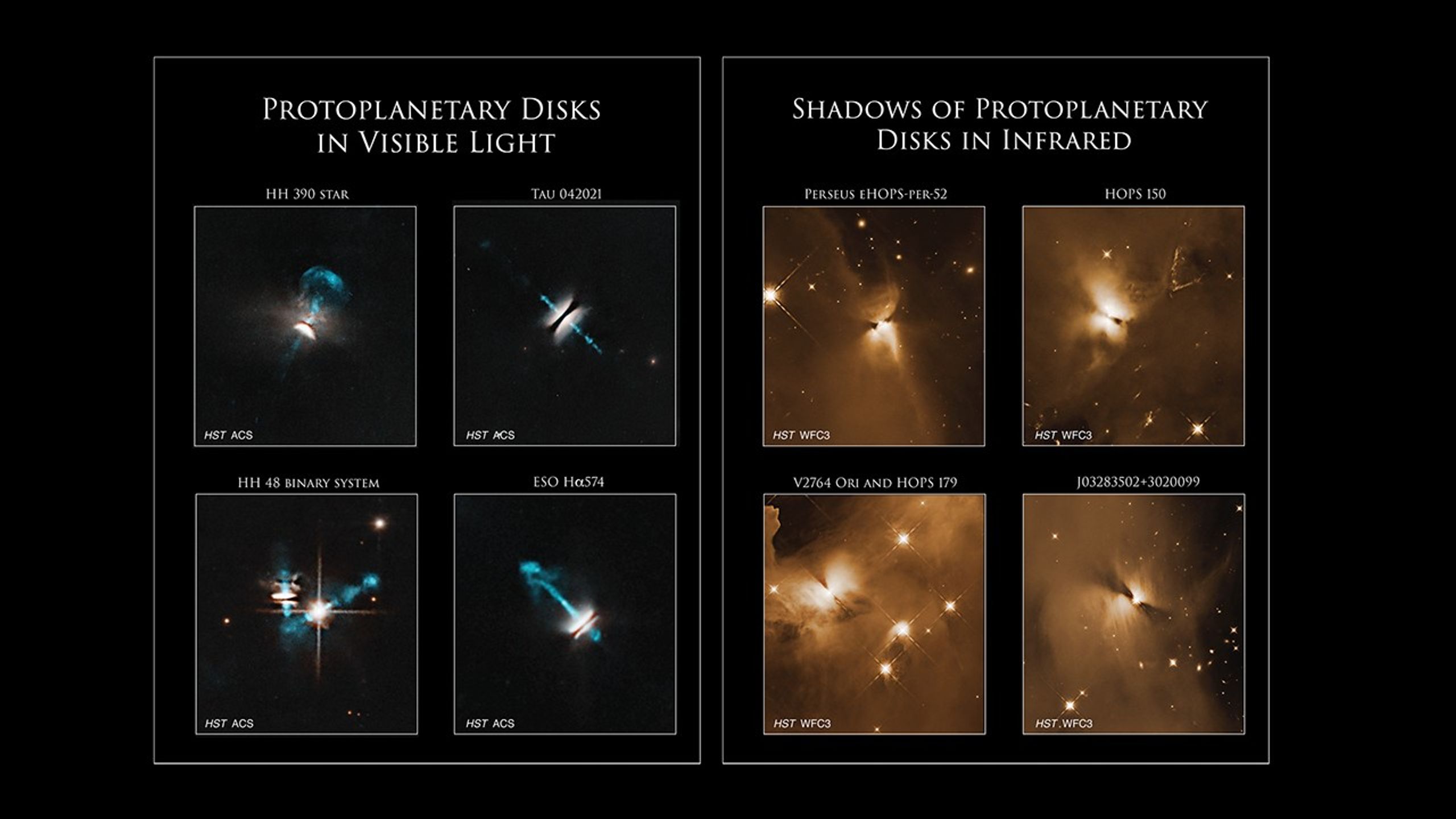PROJECT
HaloSat – A CubeSat that studied the hot Galactic halo
SNAPSHOT
To enable lower cost space-based astronomical observatories, NASA is promoting use of miniature satellites known as CubeSats and instruments built from commercial off-the-shelf components.
Space telescopes have historically been expensive to plan, build, and launch. The Astrophysics Division of NASA’s Science Mission Directorate has leveraged the development of small spacecraft known as CubeSats by universities and industry to enable capable and reliable platforms with well-focused goals, rapid development times, and affordable costs.
X-rays do not penetrate Earth’s atmosphere. This atmospheric barrier keeps us safe, but requires X-ray telescopes to be launched on satellites so they can operate above Earth’s atmosphere. The difficulties of building instruments that operate in the radiation and vacuum environment of space, the expense of spacecraft and rocket launches, and the cost of the extensive engineering and testing required all drive up the price of space-based telescopes. Technology development by academia, industry, and NASA has helped to bring those prices down.
In 1999, Jordi Puig-Suari (California Polytechnic State University) and Bob Twiggs (Stanford University) realized that by having their students build small satellites in standard sizes, they could decouple the design and construction of a small satellite, now called a CubeSat, from a specific rocket launch opportunity. Because their small, standardized, CubeSats would fit any rocket, this practice enabled them to build a CubeSat and then wait until a rocket with a bit of spare launch capacity was available to hitch a ride to space. NASA picked up on this idea and instituted the CubeSat Launch initiative (CSLI) that organizes rides to space for CubeSats built by NASA Centers and programs, educational institutions and non-profit organizations. CSLI is like a carpool to space; it enables effective use of the extra capacity available on NASA rocket launches.
This innovation provided an inexpensive way to get small satellites into orbit, but early CubeSats were not considered suitable for science missions because they were unreliable and had limited capabilities. These problems were solved when a commercial industry grew around the CubeSat standard. Private companies invested in high-quality systems for CubeSats, then recouped their costs by selling lots of copies to many different customers. Today’s commercial CubeSats are reliable and capable.
The final step to enabling inexpensive space telescopes was to increase NASA’s risk tolerance for this type of mission. The Astrophysics Research and Analysis (APRA) program enables researchers to build CubeSats with NASA funds, but without the rigorous requirements of larger, more complex missions. This factor is key to keeping CubeSat mission costs low.

HaloSat was the first astrophysics-focused and competitively selected CubeSat mission funded by NASA’s Astrophysics Division. HaloSat’s scientific goal was to find where the hot gas surrounding our Milky Way galaxy lies by mapping X-ray emission across the whole sky. This mission helped us understand how matter cycles in and out of galaxies and whether a significant fraction of the normal matter in the universe is in the form of hot gas associated with individual galaxies. HaloSat was designed to be sensitive to diffuse X-ray emission; i.e., X-ray emission that extends over large parts of the sky. The ‘figure of merit’ for diffuse emission is equal to the telescope area times the field of view. HaloSat had a very small telescope area, but a very large field of view (about 10 degrees), which made it competitive with major X-ray observatories regarding its specific goal to study diffuse X-ray emission.
HaloSat measured approximately 10 x 20 x 34 cm before its solar array was unfurled and its mass of 12 kg met the CubeSat standard. HaloSat used a spacecraft bus built by Blue Canyon Technologies (BCT) that provided a radio to communicate with the ground, star trackers and reaction wheels to point the spacecraft, and power and control systems to run onboard systems. The bus was bought for a cost far below what it would have taken to build one from scratch because BCT sells numerous nearly identical busses. HaloSat’s X-ray detectors, which had an energy range from 400 to 7000 electron volts (eV) (as a comparison, the energy range of visible light is 2-3 eV), were bought from Amptek, Inc., again, at a fraction of the cost that would have been required to develop similar detectors.
The HaloSat mission was developed on a rapid timescale, taking less than 2.5 years from the start of funding in January 2016 to launch on the Orbital-ATK OA-9 International Space Station (ISS) resupply mission on May 23, 2018. HaloSat was deployed from the ISS on July 13, 2018, and after proper commissioning, began science operations in October 2018. The cost of HaloSat from its start to the end of the first year of operations was less than $4M—a fraction of the cost of small satellites, which typically cost several hundred million dollars.
HaloSat also provided a myriad of learning opportunities for upcoming scientists and engineers. The HaloSat project directly trained several students and early-career scientists and engineers including two postdoctoral research scientists, now both working at NASA/GSFC; one graduate student who is now a postdoc at Penn State University; two more graduate students who currently analyze X-ray data; a host of undergraduates, including one now in the graduate program at the University of California, Berkeley; and several engineering students now working in industry.
HaloSat reentered Earth's atmosphere on January 4, 2021. In its short lifetime, HaloSat made important contributions to astronomical research. HaloSat surveyed the entire sky, measured the total X-ray luminosity of the Vela supernova remnant, and mapped the structure of the X-ray halo in the southern galactic sky. Astronomers used data from HaloSat to study the "North Polar Spur," which is a shell of X-ray emission energized by a powerful explosion near the galactic center and the "Cygnus Superbubble"—a region of X-ray emission associated with the local spiral arm of the galaxy.
PROJECT LEADS
Prof. Philip Kaaret, University of Iowa
SPONSORING ORGANIZATION
Astrophysics Division‘s Astrophysics Research and Analysis Program (APRA)


































